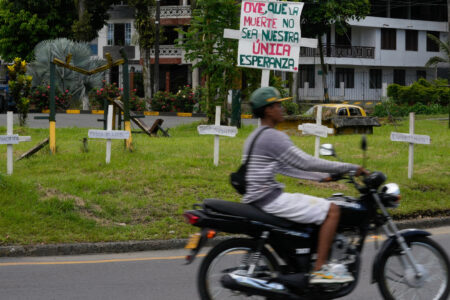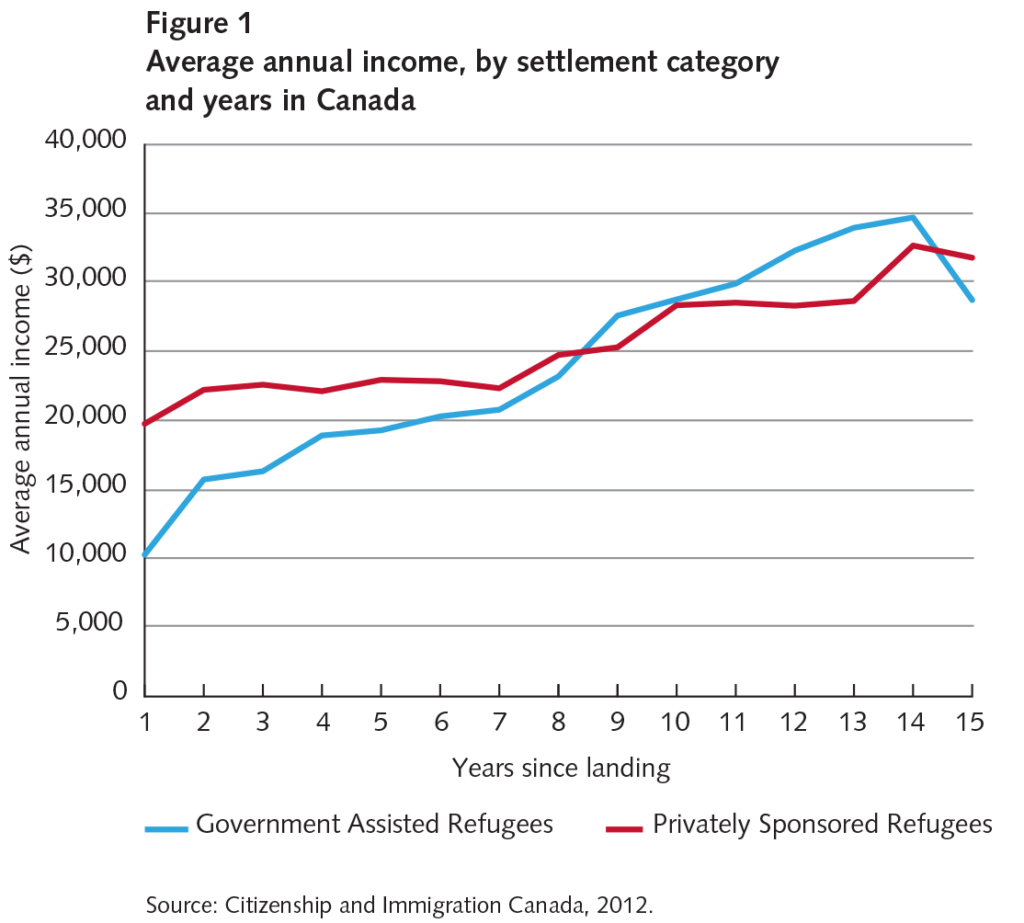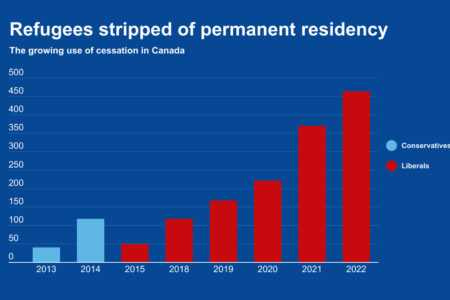
In the context of refugee resettlement, the participation and inclusion of newcomers in a society can be described by the broad concept of social integration. Integration is often defined in terms of equal access to material outcomes such as the availability and accessibility of health care, finding safe and adequate housing and obtaining employment. Focusing on these outcomes tends to shift our attention to refugees and how well they acquire the language, knowledge and skills needed to navigate their new home.
Integration is also defined as participating in and contributing to one’s community and society, for example by voting or volunteering. Here too the focus is often on the activities of refugees themselves, rather than on the settings that they are settling into, and on whether these communities welcome or facilitate participation.
In recent years, increasing attention has also been paid to the subjective or psychological aspects of integration. Integration at this level refers to refugees’ sense of belonging and security and whether they feel at home.
These definitions of integration lend themselves to documenting changes within refugees themselves, in terms of their knowledge, skills, behaviour and feelings. But integration is a process that also requires adaptation by the host community. In this way, the concept of integration of refugees is distinct from an assimilation perspective. Successful integration does require support to build refugees’ individual level skills and knowledge to help them navigate their environment better. But integration also needs to support changes in the knowledge, attitudes and practices of the communities and institutions refugees interact with. A social context where communities and institutions are welcoming and adaptive creates the social spaces needed for refugees to build social connections and access needed services and opportunities.
A holistic integration model
Integration is a holistic process; there are strong connections between its different levels or aspects: social, functional and psychological. Changes at one level are associated with changes in the other levels. Strengthening, analyzing and documenting integration therefore needs to work across all of them.
An unaccommodating social environment — where language services are not provided for basic health and social services, for example, or where newcomers feel unwelcome or unsafe in public spaces — will result in greater integration challenges. Securing adequate housing and health care will be more difficult, finding opportunities to learn English or French through social interactions will be limited, and learning to navigate the new social and physical environment will be impeded. These social environments will also lead to decreased feelings of belonging for refugees. Feelings of social exclusion have been associated with social withdrawal, which translates into poorer outcomes on other measures of integration, including reduced rates of language learning among recent refugees. Integration thus requires that both communities and refugees reach out to connect with and learn about each other.
Settlement and integration models
A critical question then is how one can best support integration for refugees. Canada is the only country in the world offering both private and government sponsorship of resettled refugees. This creates a remarkable opportunity for examining what aspects of resettlement support are most important and effective in refugee integration.
Integration for resettled refugees, those who are screened and accepted overseas before coming to Canada, is currently provided through one of three programs. Government Assisted Refugees (GARs) receive federal income assistance as financial support through the Refugee Assistance Plan (RAP) and settlement support from government-funded agencies, normally for a year following arrival. With the current focus on Syrian refugees, approximately equal numbers are arriving as GARs and as Privately Sponsored Refugees (PSRs), a program unique to Canada, in which refugees are supported by groups of citizens or various charitable or not-for-profit organizations. Those accepted into a third category (Blended Visa Office-Referred, or BVOR), representing only a small proportion of resettled refugees, have their financial support shared by private sponsors and government, and receive their resettlement support from government-funded agencies.
Currently, there is little research that explores the relative effectiveness of private versus government sponsorship. What few data exist do not clearly delineate the differences between the programs, and studies do not follow refugees through these programs for long enough to evaluate them.
There is a need for research to identify which aspects of the different programs are most important for successful refugee integration. Given the tremendous diversity among refugees, however, and the variations in their settlement experiences, the more appropriate questions are these: First, how do various elements of the interventions offered benefit refugees with various characteristics? And second, how could these programs be strengthened or combined to ensure that each provides the best support possible?
Employment as a window on integration
Securing employment is considered a key marker of integration success. However, as shown in table 1, data from the Canadian Labour Force Survey reveal that both immigrants and refugees report higher rates of unemployment relative to their Canadian-born peers, even among established immigrants residing in Canada for more than 10 years; in addition, women face even greater challenges entering the workforce than men.
Immigrants and refugees also report poorer-quality jobs, with greater involvement in insecure (temporary or part-time) employment and lower incomes. However, refugees are even less likely to find employment, more likely to have lower incomes and more likely to be overqualified for their jobs than economic immigrants. For example, an evaluation of the GAR program for those landing from 2005 to 2009 found that five years after landing, only 56 percent of men and 39 percent of women were employed.
Challenges to finding employment are among the leading issues raised by immigrants in Canada. Like other newcomers, refugees also struggle with a lack of recognition of previous education, experience or training and denial of jobs due to a lack of Canadian experience. For refugees, however, the barriers may be much greater. For example, while lack of fluency in an official language is a common barrier to employment for all immigrant groups, more than half of refugees arrive in Canada speaking no English or French.
Education is another area of difference. Unlike immigrants, among whom the percentage with university-level education has been steadily increasing over the past 30 years, refugees have highly variable educational attainment. Although approximately 10 to 20 percent of refugees arriving in recent years have a university education, as many as 20 to 25 percent of GARs arrive with little formal education and thus limited literacy skills.
Finally, social networks can be limited for newcomers but especially so for refugees. Although some belong to large communities where they can benefit from information and support, such as the Afghan and Somali communities, others that are “newer and fewer” can find themselves socially isolated. Acehnese refugees from Indonesia who arrived in British Columbia in 2004 are an example. Another is the Karen refugees from Myanmar. When they first came to Canada in the early 2000s, often as individual students through the World University Service of Canada, several reported having no one from their community in their new city. This isolation can result in severe negative psychological consequences as well as repercussions related to finding employment, better housing and other essentials.
Employment plays an important role in refugees’ sense of belonging, defining what it means for them to feel “at home” in Canada. Feelings of belonging have been linked to language learning and community participation, highlighting how these multiple levels of integration are mutually supportive. Encouraging employment as soon upon arrival in Canada as possible may therefore translate into more successful integration at multiple levels.
Most refugees find their first jobs through their social networks, underlining the importance of successfully building social networks. Having social connections beyond one’s co-ethnic community has been found to be particularly important in finding work, as it increases the number of employment opportunities available.
PSRs benefit from a network of relationships with their sponsors that they can use to find employment. The built-in social connections that come with private sponsorship may create more opportunities for employment and facilitate access to first jobs for refugees. In fact, research suggests that PSRs find employment sooner than do GARs, though there is also an impetus to become self-sufficient quickly as a PSR, so that another refugee might be sponsored. Finding work quickly at the cost of not acquiring some official-language competence could lead to lower-paying, even dead-end jobs.
Some research suggests that while PSRs find employment earlier, their long-term incomes are lower than those of GARs. Data from the Longitudinal Immigration Database show that despite starting salaries almost double those of GARs, PSRs’ incomes increase more slowly and are, on average, somewhat lower than those of GARs after eight years in Canada (see figure 1). One suggestion has been that GARs are encouraged to take a full year to develop their language skills and so enter the job market with better English or French. Another possibility is that, in taking jobs early, PSRs are accepting poorer-quality employment that is less likely to be in their area of expertise. In either case, it seems that PSRs may find fewer opportunities for advancement relative to GARs, raising the question of whether and when early employment is the best outcome.
While employment matters, not all employment has positive outcomes. High-quality jobs are those that are commensurate with training and education, provide an adequate income, are full-time and permanent, and offer opportunities for advancement. Precarious employment or employment in physical jobs for which one is not trained leads to higher rates of injuries and chronic health issues. Unemployment as well as working at jobs for which one is overqualified has been associated with decreasing mental health over time for refugees.
Exploring the relationship between sponsorship and integration outcomes
The lack of clarity around the effectiveness of the various forms of sponsorship with respect to employment outcomes highlights the lack of knowledge we have about the relative success of these programs overall. Little longitudinal research exists on what works for whom, and why.
Clearly, more information is needed about the conditions generated by each form of sponsorship and what works best. Quantitative data on services used, demographic characteristics and integration outcomes are critical but need to be supplemented with qualitative data to understand how pre- and post-migration conditions, various aspects of identity and settlement services affect refugee outcomes. Current data suggest that integration is a long process, and that we may not have a clear picture of the effectiveness of our programs until 10 or 15 years after refugees have landed in Canada. Given the tremendous variability among refugees in age, education, language skills, cultural backgrounds, urban/rural biographies and past experiences, a one-size-fits-all solution is likely to be a poor fit.
A humanitarian approach to resettlement provides protection for refugees and creates conditions for them to rebuild lives and livelihoods so that they may become full members of Canadian society. It is a commitment to paving economic, social and political pathways to integration and to a meaningful and productive life. Successful integration allows refugees to achieve their goals and allows Canada to share in the rewards of the knowledge, skills and ambition that refugees bring with them. Getting this right will benefit us all.
Photo: Stacey Newman / Shutterstock.com
This article is part of the Refugee Integration special feature.
Do you have something to say about the article you just read? Be part of the Policy Options discussion, and send in your own submission. Here is a link on how to do it. | Souhaitez-vous réagir à cet article ? Joignez-vous aux débats d’Options politiques et soumettez-nous votre texte en suivant ces directives.









